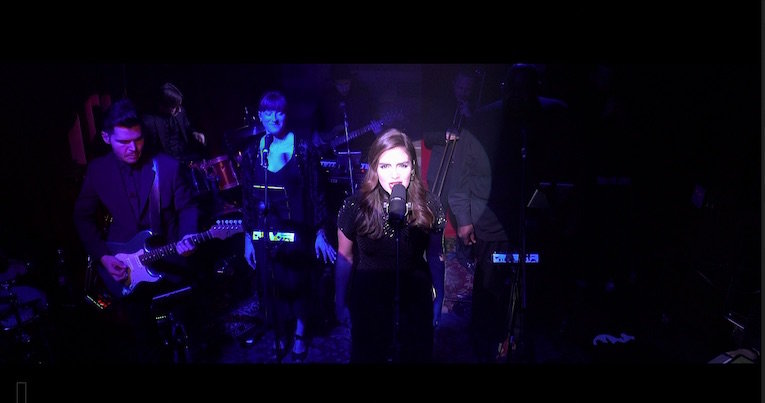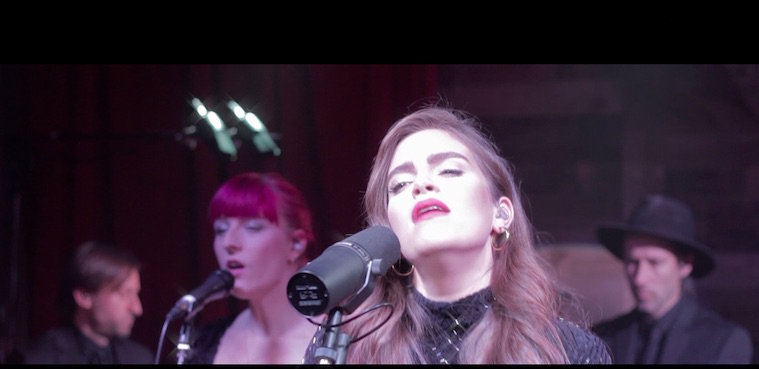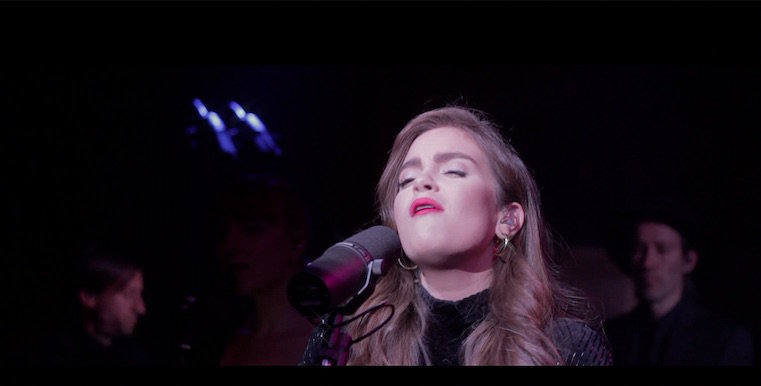
Brian E. Rutan
-
Posts
16 -
Joined
-
Last visited
Posts posted by Brian E. Rutan
-
-
I just remembered, I also made this inverse-square law calculator: https://jsfiddle.net/polymetric/pent71uh/
Here's how you use it:
Grab an incident reading of a light at a specific distance and enter in the incident reading and distance in whatever unit you want (footcandles or lux, feet or meters), then you have two options:
1. Calculate the intensity from a particular distance
2. Calculate the distance you need for a particular intensity
It's an extremely simply calculator. It doesn't account for the effective difference in distance that you get from fresnels or other fixtures with lenses in them, but then again, I don't think Arri's calculator does either, or maybe it's just not very much. I tested this by putting values from Arri's calculator into mine and then solving for the same distance, and they gave me very similar results. I'll test it on actual lights when I get a chance. Also, it should pretty much work perfectly on open faces and obviously point sources like bare bulbs.
I probably could have done this in a spreadsheet. Actually I definitely could have and should have, but I wanted to mess around with JavaScript, so there you go.
-
Yeah, I think most of the stuff from Wikipedia was sourced directly from that Kodak page. I was mainly focused on color negative and print stocks when making this. Plus it was harder to find consistent info on the older B&W stocks. But since I'm putting it out there I might as well try to add those.
Also, I'm not quite sure when 5247 was discontinued. Not many movies that I know of were shot on it after the EXR line came out, but I found a Kodak document from 1993 on 5247: https://125px.com/docs/motionpicture/kodak/ti0835.pd
-
Here's Arri's calculator that Barnaby mentioned. http://calc.arri.de/calculator
-
I made a spreadsheet of the history of Kodak's motion stocks (neg and print, no intermediates)
It's basically just a compilation of info from Wikipedia and some other sources. I can't attest to its accuracy but I think it's pretty good.
https://docs.google.com/spreadsheets/d/1ABTNG7m1G_cEoid8q6Q_KAeeamS_U-EtJARq8K6L2XI/edit?usp=sharing
-
 1
1
-
-
I know this is a bit of an old thread but I just wanted to throw in something I found.
This is the white paper for the Scanity. It goes into a lot of detail on the research they did to arrive at the design decisions they made.
https://www.dft-film.com/downloads/datasheets/Scanity-Whitepaper.pdf
-
3 hours ago, Dylan Gill said:
I'm not actually a fan of shallow dof, is there a way to counter act this on the LF given it'll probably be the more popular capture device going forward?
The only way to increase DoF is to either crop in and use a shorter lens (effectively the same as using a smaller format), or stop down the lens and either gain up or add more light. The way Steve did it in the two frames I posted was the latter, stopping down the lens, which has the disadvantage of needing more light and/or creating an noisier image (from higher ISO). I believe in this case, he actually needed ND filters on the Alexa to bring it into line with the IMAX.
-
The only thing that determines perspective is the front of the lens's position relative to the subject and environment. The combination of focal length and sensor size determine the angle of view (AoV), which simply controls what "slice" of that perspective is captured.
Here's a great article addressing some fallacies about large formats, by Steve Yedlin, ASC, that goes into more detail:
http://www.yedlin.net/191106.html
And here, he's matched the AoV and DoF of IMAX film to the Alexa:


It can be argued that, if you want a razor-thin depth of field for some reason, instead of renting an f/0.7 lens, just use a larger format for that shot. But I think this is more of use for special purposes.
The primary advantage of a larger sensor, then, is really its larger resolution for the same pixel pitch. However, this is also less useful than you might think:
http://yedlin.net/ResDemo/index.html
He's also created a demo that shows just how little camera resolution influences the final image. The second part in particular is very eye-opening.
I believe he shot Knives Out (2019) almost entirely on the Alexa Mini, except for a few VFX shots on the Alexa 65 for the extra resolution. But don't quote me on that.
Interestingly, this is similar to how, before digital, many films were shot entirely on 35mm except for a few VFX shots on 65mm or VistaVision.
I believe a more rigorous way to create different "perspective" looks is simply taking a better look at how you place the camera and choose lenses. Simply choosing a 50mm further away instead of a 24mm closer to the subject might provide the same framing but a different actual perspective.
-
In your thread on The Love Witch, you said that you pulled 200T one stop. Was that simply because doing that resulted in a similar look to 60s Technicolor films, or because it was actually a common technique in that era?
That book sounds perfect, I'll have to get it.
-
I'm trying to better understand the look of film, and how it evolved. Mainly I'm interested in the second half of the 20th century - what was common in each decade from the 50s through to the 90s? Is it more the film stock or the processing pipeline that give these decades their own look?
-
On 11/17/2019 at 9:01 AM, dallas kruse said:
Screen grab 1 is obviously blown out.
Screen 2 is a few frames later when the stage lighting changes ... in which the singer looks great.
3 and 4 are really blown out and I lose definition on her face.
Trying to find a way to balance out my shots so I don't get ANY blown out shots. Should I be using a light meter before shooting?
Can I just say that I shoot with both the T3i and A7s often, and this looks way better than anything I've done. Super impressive. That third shot actually looks quite filmic.
-
I know one was used on Back to the Future Part II (1989). I'm pretty sure I saw one on the BTS of Raiders of the Lost Ark (1981) as well. Are these the earliest instances of them? How similar are these models to their modern counterparts?
-
-
On 10/22/2019 at 1:06 AM, Dirk DeJonghe said:
The link to my (temp) website is fixed. We use split screen with the original digital image and recorded negative. See my previous post.
Thanks for the reply, Dirk. I probably should have clarified that in my previous post I was addressing the creator of this thread, Will J. Lokken.
While I'm at it, what made you go with the process of recording digitally acquired footage to film and back? I must say I really like the results you got, it totally looks like a real negative. But, I'm curious, what didn't work about simply acquiring 35mm directly? Also, why record to a negative instead of DI print stock or intermediate stock?
-
-
Hey, I know this is an old post, but it seemed intriguing. However, the link is dead. I think your domain expired.
I'm curious, generally what process did you go through to emulate the film stock? Did you shoot the same scene with a digital camera and 5219 stock and compare them, or is it something completely different? What kind of math was used?
Thanks.






Spot meter use cases
in Lighting for Film & Video
Posted
I have a Spectra incident meter. I've heard it's a good idea to have a spot meter as well.
I know they're good for metering stuff you can't reach with an incident meter, or balancing practicals and whatnot. But those seem pretty situational. What are some other, more common uses for a spot meter?